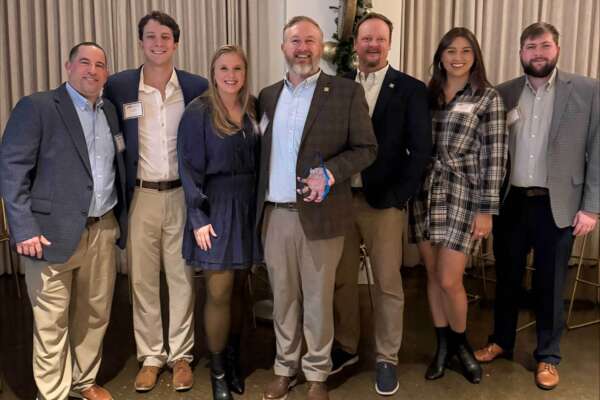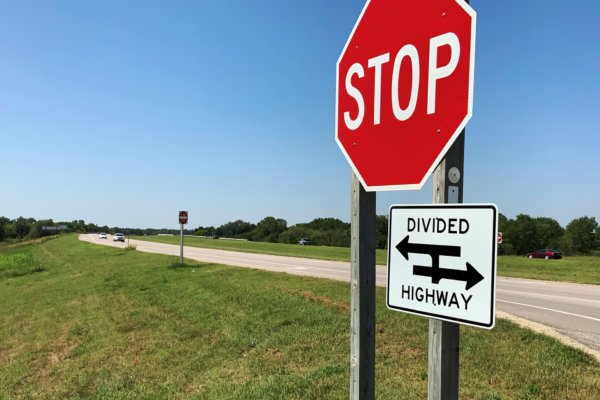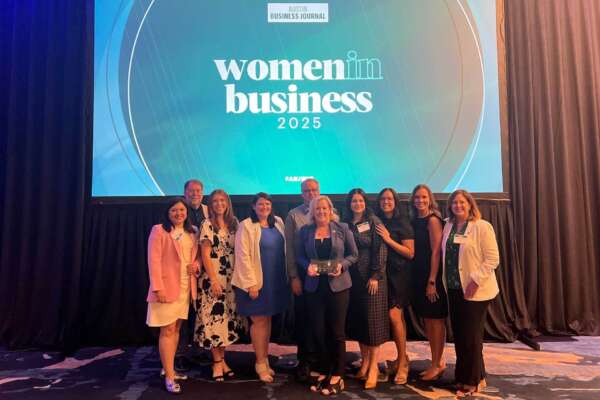How Garver executed one of the Texas Department of Transportation’s largest interstate corridor studies in history

Garver’s Transportation Planning and Environmental Team served as the prime consultant supporting the Texas Department of Transportation (TxDOT) on a study to determine the feasibility of upgrading the Ports-to-Plains corridor to an interstate facility. The Ports-to-Plains corridor in Texas traverses the entire state from the Oklahoma and New Mexico state lines to the Texas-Mexico International gateway in Laredo.
The Ports-to-Plains Feasibility Study was mandated by the Texas Legislature in House Bill 1079 and was one of the largest corridor studies in the state’s history. Covering nearly 1,000 miles, the corridor supports Texas' key economic engines of international trade, energy, and agricultural production.
In the latest IQ&A, Garver’s series of conversations with leading experts, Planning and Environmental Team Leader Wendy Travis, AICP, discusses how Garver delivered the study on an expedited timeline.
Garver completed this study in less than a year when a study of this magnitude typically takes 24 to 36 months. How were you able to meet the expedited timeline?
We brought effective leadership, project management, and the right technical experts to this complex study. The project required data collection from over 100 datasets, including prior TxDOT plans, crash databases, census data, economic projections, prior roadway as-builts, freight origins and destinations, and population migration trends. The study involved an Advisory Committee comprised of county judges and mayors and three Segment Committees comprised of stakeholders. HB 1079 required these committees to meet 4-5 times throughout the year-long study. This meant not only was our team collecting data, conducting analyses, and preparing reports, but also preparing presentations to elected officials and stakeholders, making the technical data and analysis understandable to all audiences.
Throughout the course of the study, our team stayed focused on the study’s goals and the needs of TxDOT and stakeholders in the corridor. We listened to TxDOT and to stakeholders to understand the expectations of all the parties and provided complex technical information in a meaningful format for decision-making. Our team’s ability to listen and respond was essential to a successful delivery at lightning speed. This was recognized by TxDOT and stakeholders as a key to successful delivery and the ability to complete the study on time.
How did you assemble the right team and what techniques did you use to execute the study?
It was important to immediately build the client’s and stakeholders’ trust; not just trust in me, but in Garver’s Team, so bringing the right team to deliver the study was crucial. In addition to Garver planners, engineers, and public involvement specialists, we brought teaming partners who enhanced Garver’s technical expertise. We chose partners with a shared vision for this challenging project, and a commitment to the fast-paced schedule. Each team member took responsibility for managing multiple tasks. Subject matter experts refined technical data and determined the best ways to convey messaging.
Our team had internal and external touch points to familiarize the team with each other, the client, and the project. Our team exhibited a collaborative spirit that could be seen by TxDOT and stakeholders. Due to the accelerated schedule, data collection and analysis was ongoing concurrent with analysis and the presentation of data to TxDOT staff, leadership, the Advisory and Segment Committees, and the public. Despite a fast-paced schedule, it was critical our team complete a thorough analysis for stakeholder and TxDOT decision-making. Multiple players from TxDOT’s Planning Division, Legislative Affairs, Districts, Public Involvement, and Administration were actively engaged in the study and it was important to gain their input because the report would be delivered to Gov. Greg Abbott and the Texas Legislature.
How did you reach stakeholders and what techniques were used to convey complex data and information for meaningful input?
Stakeholder engagement was fundamental to the study. Our team handled stakeholder meeting logistics, prepared presentations, handouts, maps, and used interactive engagement tools to facilitate discussion and to gather input. The Advisory Committee met six times between October 2019 and October 2020. Each of the three Segment Committees met five times between November 2019 and June 2020. There were eight public meetings held throughout the corridor to gather input. We developed a virtual public meeting website so the public could provide input to the study. As the COVID-19 pandemic hit and stay-at-home orders were put into place in March 2020, we seamlessly converted all committee and public meetings to a virtual format, using TxDOT WebEx video conferencing without missing a study milestone deadline.
We used infographics and maps to present analysis of safety and mobility, freight movement, economic impacts, traffic congestion relief, moving energy products to market, interstate costs, interstate designation areas, and potential funding sources required by HB 1079. These tools allowed us to present the analysis and findings of important factors in determining the feasibility of an interstate corridor in a clear and concise manner that could be easily understood by stakeholders and decisionmakers. The input received was incorporated into the three Segment Committee Reports and the Advisory Committee Report, enabling TxDOT to meet the requirements of HB 1079 and submit their report to the Texas Legislature and Gov. Abbott by Jan. 1, 2021.
To learn more about how Garver's Transportation Planning and Environmental Team can help you, contact Wendy today.









Share this article